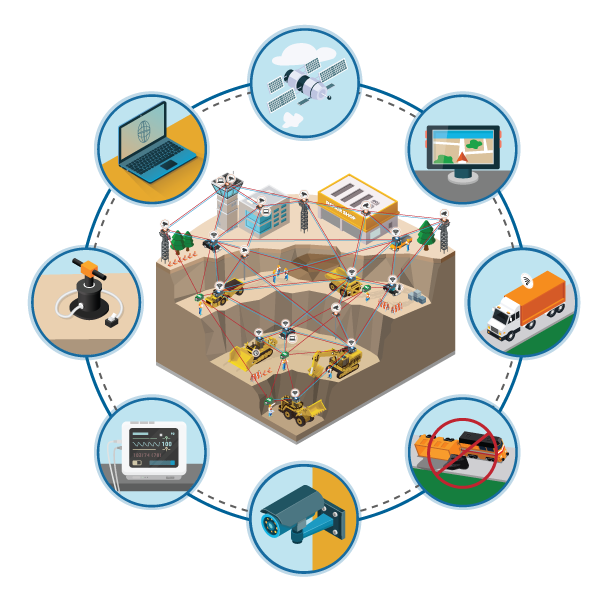Rajant Corporation, the provider of Kinetic Mesh® wireless networks, and Hitachi Construction Machinery Australia say they are improving operational safety and productivity through the use of autonomous haulage systems in an Australian coal mine. Hitachi selected Rajant Kinetic Mesh because it is the only industrial wireless network enabling vehicle-to-vehicle (V2V) communication, which allows autonomous vehicles to talk directly to each other, providing enhanced coverage and reliability.
“Rajant is a Hitachi central wireless network partner for the mining industry when it comes to automation,” according to Hitachi’s Greg Smith, General Manager AHS Business Unit, Australia. “Deployed in 200 of the largest mines globally, Rajant has the network Hitachi relies on for our autonomous haulage systems, significantly reducing human exposure to safety hazards in mining’s hostile environments.”
“We have more than a dozen autonomous vehicle partners today, and that list is growing continuously,” shares Robert Schena, CEO of Rajant. “In our Australian coal mine deployment with Hitachi, there are currently six autonomous haul trucks in production, scaling to over 45 during 2020/21, with Rajant. The mine’s existing Rajant wireless network deployed across a vast number of mobile and fixed infrastructure easily met the requirements to support and enable Hitachi’s autonomous operations. Additionally, Hitachi systems can be retrofitted onto existing vehicles expanding their scope and market significantly.”
Distinct to Rajant Kinetic Mesh is the proprietary InstaMesh® networking software protocol, which dynamically optimises Kinetic Mesh performance as network characteristics change, without the need for a controller node or human intervention. Mobile nodes can communicate directly with each other to enable V2V communications between both manned and unmanned vehicles.
Smith adds: “Hitachi has experienced and witnessed that Rajant networks dynamically adapt to evolving conditions and make multiple connections over multiple frequencies per node for continuous, mobile connectivity. This level of mission-critical reliability is a mandate for V2V and particularly for autonomy.”
Rajant additionally told IM: “The mine installed a Rajant network specifically for the Wenco Fleet Management System which is crucial for site production. When the Hitachi AHS was being trialled, this was performed over a separate network. These two networks are now being merged. The reason for this was to ensure that any issues with the AHS (if they did arise) would have no impact on production. Networks could be shut down with no impact on production. Now that the AHS trucks are in production, the mine is amalgamating both networks into a single network. The V2/peer-to-peer capability offered by the Rajant network further enhances the AHS application since outages in infrastructure (eg communications trailers down for maintenance) are not as critical when compared to normal WiFi or even LTE. In normal WiFi deployments and in LTE – the vehicles communicate to a strategically placed communications trailer or tower. Failure of this infrastructure results in outages that can severely cripple the networks. With a peer to peer network, the impacts of these outages are minimised.”











